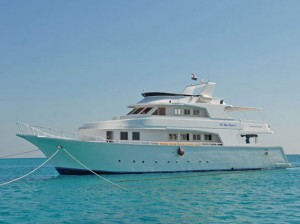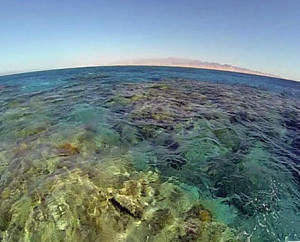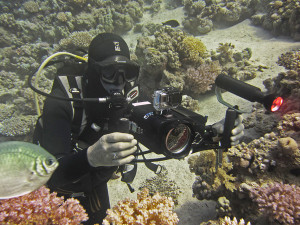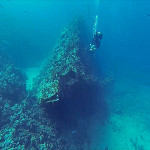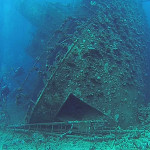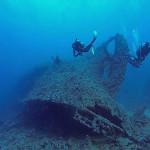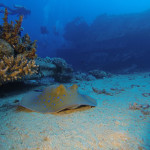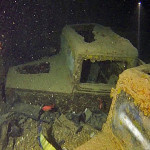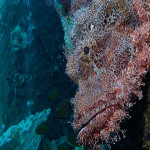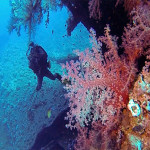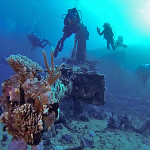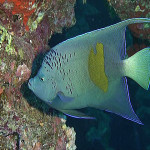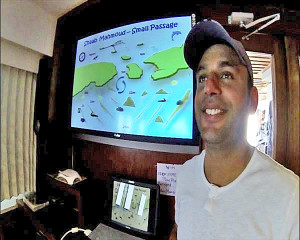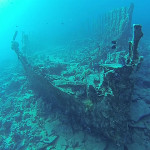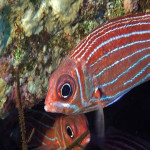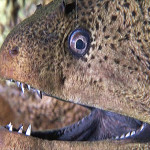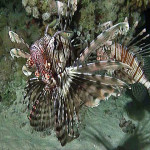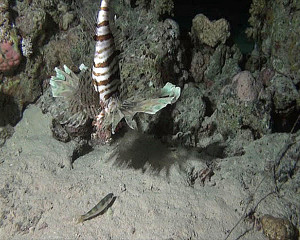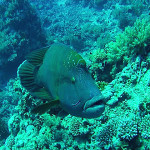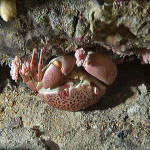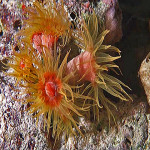Photo / Video News & Reviews
Underwater Videography Trip Report: Jeff Goodman video course in the Red Sea
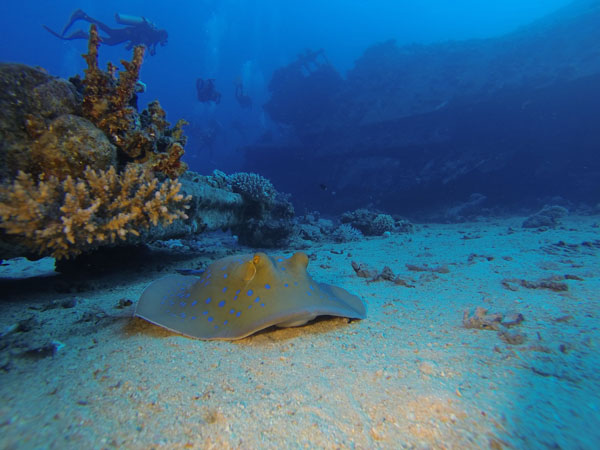
On this occasion we were holding the video course on the Blue Planet liveaboard organised by OonasDivers and following the Northern Red Sea Wrecks route to combine scrap metal on the sea bed with good wildlife. I’m not an over keen wreck diver just for the sake of the wreck itself; the main interest I have in them is the habitat they provide for a huge variety of marine life, and as luck would have it our Egyptian dive guide Ashraf Hassanin felt the same, and turned out to be not only enthusiastic but also very knowledgeable. During our 5 diving days we explored large wrecks such as the Thistlegorm to the smaller and less distinguished. In between we dived local reefs and it was one close to Hurghada where we did our check dive.
After a very long journey by car and plane, it is always thrilling to wake up on the first morning of the trip to see the blue sky above and a wonderful multicoloured reef stretching out before us. The crystal water was full of promise with relaxed diving and a multitude of marine animals to film.
Liveaboard schedules can be very military in their timings and goals, but I was so happy to find that our guide Ashraf was relaxed and accommodating. There were places he wanted to take us but at the same time he was quite open if we wanted to change things. In fact, it is worth saying at this point, the whole crew were extremely helpful, friendly and professional and as a side note, the food was really good.
Some of our dives were on the bigger wrecks such the Thistlegorm, Rosalie Moller and the Carnatic. Theoretically these should be home to an abundance of wildlife, but pressure from countless divers does take its toll and only the most hardy of species stick around. However, it was on our first descent that several dolphins cruised by. They didn’t stay as we all hoped, but slowly and effortlessly eased away into the deep blue. A wonderful start.
Wrecks can and do provide great backdrops for video and still photography. Twisted structures add drama to the wildlife and stark silhouettes add mystery. Wide angle lenses are undoubtedly a bonus when filming large wreck areas but at the same time the more standard longer focal lenses are good for concentrating on the smaller wildlife close ups. With this in mind I mounted a Gopro on top of the Gates housing for my Sony handycam. I now had the option of very wide shots from the Gopro and the normal variety of framing options given by the handycam.
When filming wrecks there is nothing quite so impressive as a clear water shot of the entire ship, especially if you have a diver in frame for scale. This gives a sense of location by letting the viewer know the context in which any other images are taken.
Having established the nature of the ‘studio’, we are then free to explore the more detailed images that make the wreck so interesting. A variety of mid shots and close ups on different subjects will convey this interest and entertain your future audience.
As well as the larger wrecks, we also explored a few smaller ones and a couple of natural coral reefs. It was thanks to Ashraf that we were able to avoid the diving crowds and pick our spots accordingly. I do enjoy small wrecks as they concentrate the inhabiting wildlife into a small area and thus reduce the time searching and using precious air finning from one end of a wreck to the other. An important part of any new dive is research on the site you are visiting. Dive guides will tell you about currents and depths and how long your dive should be. Ashraf did this, but also included his enthusiasm for wildlife, telling us what species to expect as well as the best places to look. Really helpful!
The bigger wrecks are of course more dramatic but it is these smaller ones that provide more opportunity for filming wildlife. Full of easily accessible nooks and crannies these small wrecks come to life when you look closely.
While drifting around the outside of one small wreck I spotted this Devil Scorpionfish hobbling across the sand. In fact there were two of them and as I watched, so they passed a third one, motionless under a small piece of coral. Walking Scorpionfish really are an extraordinary sight as they amble along on their pectoral fins trying for all the world to convince any onlooker that they are nothing more than a loose piece of coral. But the slowness of their movements belies the incredible speed with which they snatch their prey. It is estimated to be less than 15 milliseconds. The dorsal fins of these fish carry very potent venom and can cause fatalities in humans, so be careful where you put your hands. But, as we should all know, putting hands and feet down on reefs is bad practice.
Night diving anywhere is exciting be it on reef or wreck. Lionfish use the darkness to hunt for prey such as small fish, crabs and shrimps. Yet they have learned that a diver’s light can temporarily confuse and immobilise these small animals and so will follow the beam waiting for the opportunity to strike at some unsuspecting prey. It is a very clever adaptation. I have seen other species do it, such as moray eels, but the Lionfish are the true masters.
Here we can see a Lionfish slowly drifting towards a small fish caught in my light, seconds before making its lunge. It strikes with incredible speed and in the blink of an eye the small fish is gone. I couldn’t take a still frame of the actual strike from the video, as the action was too fast and the resulting still image was too blurred. Looks good on the video though.
Whether videoing by day or night, it is important to have a good video light. One that will give you a wide and even spread of light. They are not that expensive and well worth looking seriously at.
As always, time seemed to fly by and it was too soon that we are drying our gear and packing for the return flight home. Thinking back on the week I was certainly very pleased with putting my Gopro on the handycam housing. It literally doubled my framing abilities and without too much extra cost. My initial concern of matching material from the Gopro with the Sony in the edit was unnecessary. The quality of the Gopro was superb and with a little white balance correction it cut perfectly with the Sony images. One of the students on this trip was filming exclusively with a Gopro and was delighted with his overall results. His video testimonial of the course can be seen here.
The next Red Sea underwater video course is in March 2014 and held at the eco diving resort of Marsa Shagra with Red Sea Diving Safaris in the southern Red Sea. The course is again in association with OonasDivers.
Further details can be found on my web site at www.jeffgoodman.co.uk
Blogs
Diver Discovering Whale Skeletons Beneath Ice Judged World’s Best Underwater Photograph
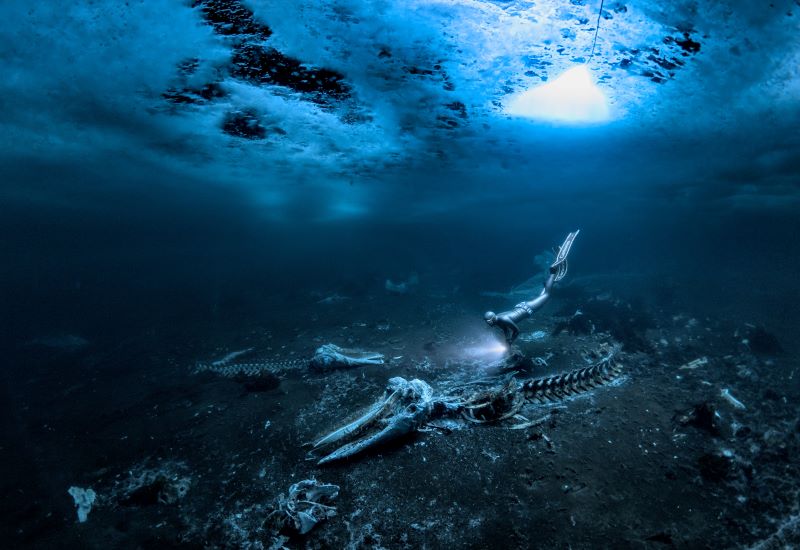
An emotive photograph showing a freediver examining the aftermath of whaling sees
Alex Dawson from Sweden named Underwater Photographer of the Year 2024. Dawson’s
photograph ‘Whale Bones’ triumphed over 6500 underwater pictures entered by underwater
photographers from around the world.
“Whale Bones was photographed in the toughest conditions,” explains chair of judging
panel Alex Mustard, “as a breath-hold diver descends below the Greenland ice sheet to bear
witness to the carcasses. The composition invites us to consider our impact on the great
creatures of this planet. Since the rise of humans, wild animals have declined by 85%. Today,
just 4% of mammals are wildlife, the remaining 96% are humans and our livestock. Our way
needs to change to find a balance with nature.”
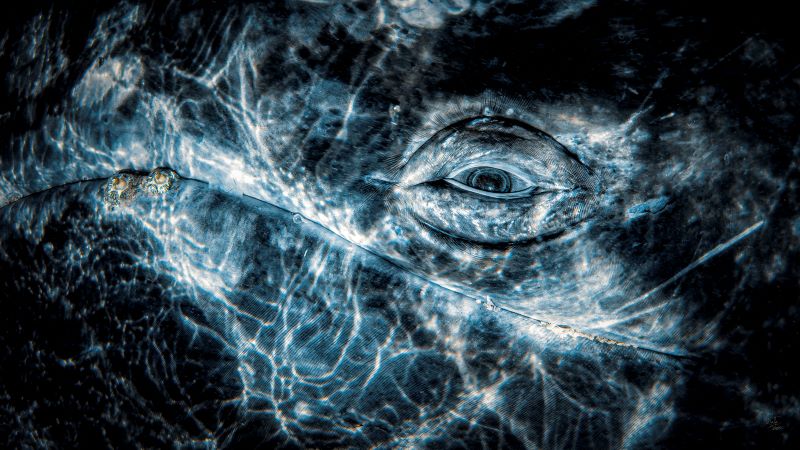
Photo: Rafael
Fernandez Caballero
Whales dominated the winning pictures this year with Spanish photographer Rafael
Fernandez Caballero winning two categories with his revealing photos of these ocean giants:
a close up of a grey whale’s eye and an action shot of a Bryde’s whale engulfing an entire bait
ball, both taken in Magdalena Bay, Baja California, Mexico. Fernandez Caballero took ‘Grey
Whale Connection’ while drifting in a small boat, holding his camera over the side in the water
to photograph the curious whale. ‘The End Of A Baitball’ required Fernandez Caballero to dive
down and be in exactly the right place at the moment the whale lunged. “The photo shows
the high speed attack,” he said, “with the whale engulfing hundreds of kilograms of sardines
in one bite — simply unforgettable to see predation on such a scale.”
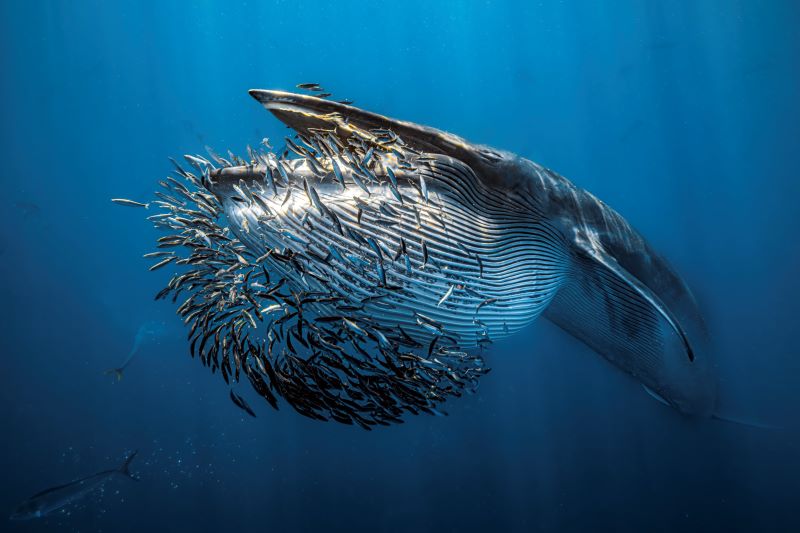
Photo: Rafael
Fernandez Caballero
Lisa Stengel from the United States was named Up & Coming Underwater Photographer of the Year 2024 for her image of a mahi-mahi catching a sardine, in Mexico. Stengel used both a very fast shutter speed and her hearing to catch the moment. “If you listen there’s an enormous amount of sound in the ocean,” she explained. “The action was too fast to see, so I honed in on the sound of the attacks with my camera to capture this special moment.”
“It is such an exciting time in underwater photography because photographers are capturing such amazing new images, by visiting new locations and using the latest cameras,”
commented judge Alex Mustard. “Until this year I’d hardly ever see a photo of a mahi mahi,
now Lisa has photographed one hunting, action that plays out in the blink of an eye.”
The Underwater Photographer of the Year contest is based in the UK, and Jenny Stock,
was named as British Underwater Photographer of the Year 2024 for her image “Star
Attraction”, which finds beauty in species of British wildlife that are often overlooked.
Exploring the west coast of Scotland, Stock explained “in the dark green depths my torch
picked out the vivid colours of a living carpet of thousands of brittle stars, each with a
different pattern. I was happily snapping away, when I spotted this purple sea urchin and I
got really excited.”
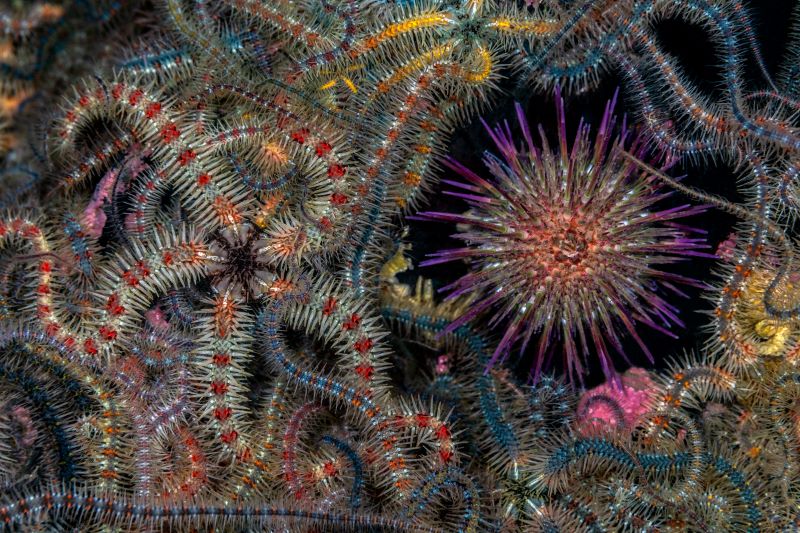
Photo: Jenny Stock
In the same contest, Portuguese photographer, Nuno Sá, was named ‘Save Our Seas
Foundation’ Marine Conservation Photographer of the Year 2024, with his photo ‘Saving
Goliath’, taken in Portugal. Sá’s photo shows beachgoers trying to save a stranded sperm
whale. The picture gives us hope that people do care and want to help the oceans, but also
warns us that bigger changes are needed. “The whale had been struck by a ship and its fate
was sealed,” explains Sá. “An estimated 20,000 whales are killed every year, and many more
injured, after being struck by ships-and few people even realise that it happens.”
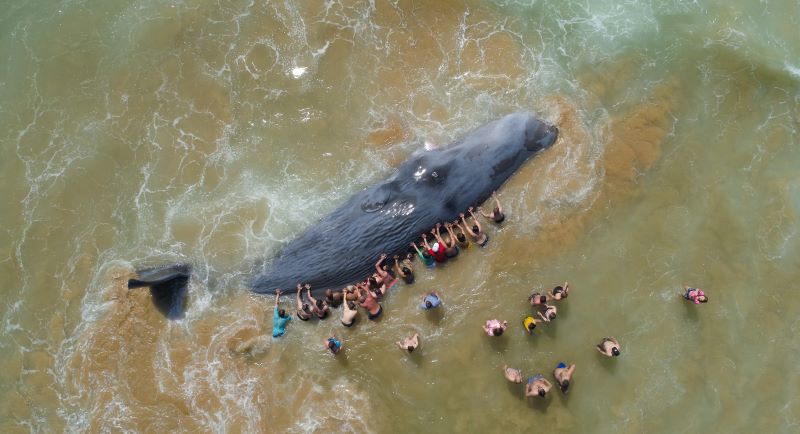
Photo: Nuno Sá
More winning images can be found at www.underwaterphotographeroftheyear.com.
About Underwater Photographer of the Year
Underwater Photographer of the Year is an annual competition, based in the UK, that celebrates photography beneath the surface of the ocean, lakes, rivers and even swimming pools, and attracts entries from all around the world. The contest has 13 categories, testing photographers with themes such as Macro, Wide Angle, Behaviour and Wreck photography, as well as four categories for photos taken specifically in British waters. The winners were announced in an award ceremony in Mayfair, London, hosted by The Crown Estate. This year’s UPY judges were experienced underwater photographers Peter Rowlands, Tobias Friedrich and Dr Alexander Mustard MBE.
Header image: Underwater Photographer of the Year 2024 winner Alex Dawson
News
World’s Best Underwater Photographers Unveil Breathtaking Images at World Shootout 2023
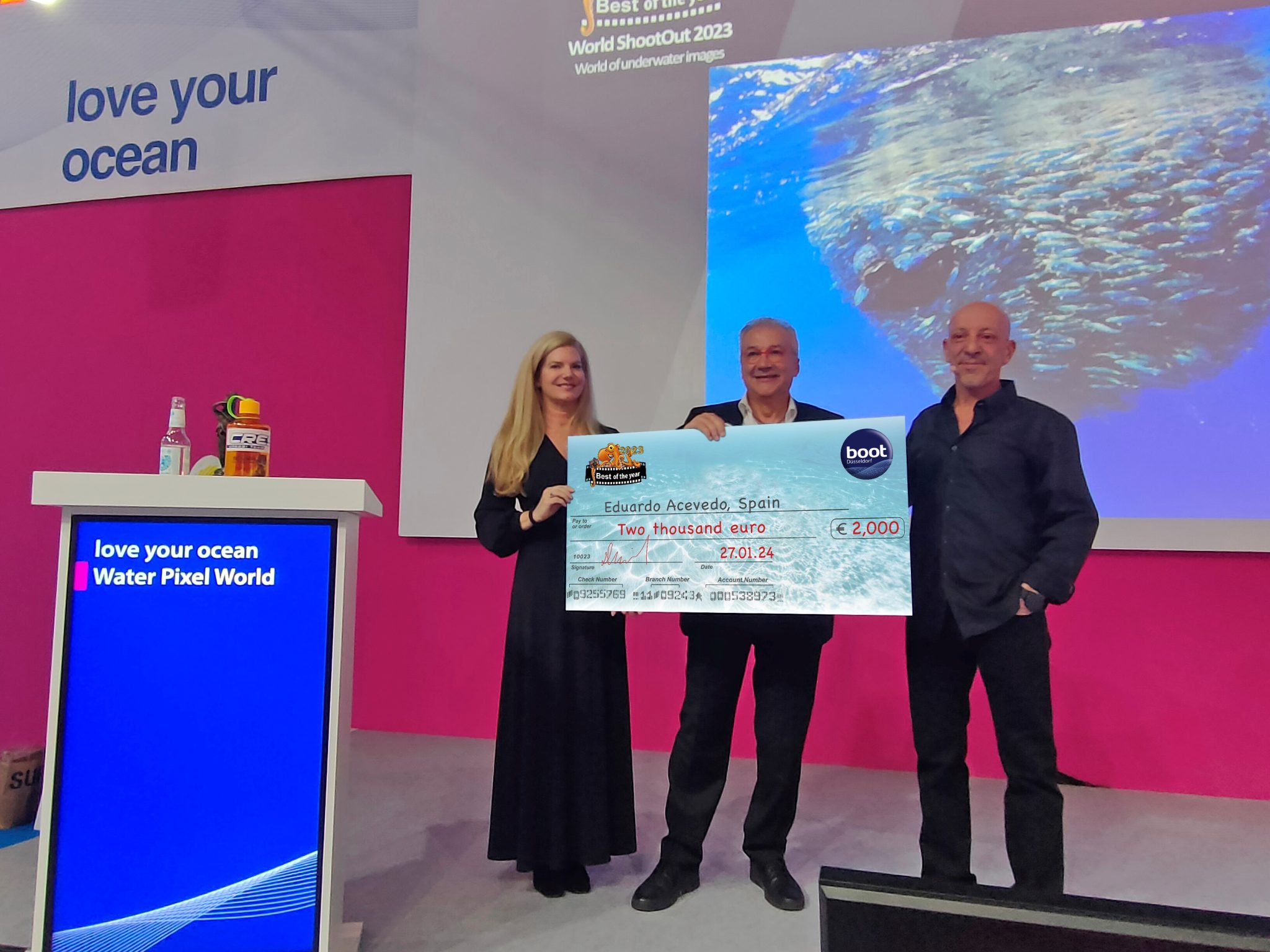
The winners of the prestigious World Shootout 2023 underwater photography competition were announced at this year’s BOOT Show, captivating audiences at the world’s largest diving and water sports exhibition in Dusseldorf, Germany. Hundreds of photographers from 54 countries competed across nine categories, pushing the boundaries of creativity and technical skill.
Grand Prize Winners
- Picture of the Year: Spanish photographer Eduardo Acevedo “secured” the top Honor with the prestigious prize the “boot Dusseldorf Director’s Prize, earning an Andromeda statuette and a €2,000 cash prize.
- Best 5 Images Portfolio: Luc Rooman from Belgium triumphed in this category, winning a dream 4-week diving trip for two to Papua New Guinea, valued at $18,900.
- Amateur Photographer: Alexandra Ceurvorst from the USA impressed the judges with her talent, taking home the 1,000 € cash prize award.
Celebrating Diversity and Innovation
This year’s competition saw 11,680 entries from 964 photographers, showcasing a remarkable spectrum of skills and perspectives. From the intricate wonders of Macro photography to the beauty of “Black Water”, the “Underwater Fashion” category added a touch of artistry and innovation, while the ever-important ” Environmental & Conservation” category served as a powerful reminder of the need to protect these fragile ecosystems.
Looking Ahead: AI and Ocean Conservation
World Shootout founder and producer David Pilosof unveiled an exciting addition for the 2024 competition: this year the Environmental category will be focusing on the impact of plastic on our oceans and future.
This category will embrace the potential of AI or other editing software as a tool to amplify the conservation message.
Entrants will submit campaigns of three original underwater photographs dealing with plastic pollution, along with their final AI assistance processing. This innovative approach encourages artistic expression while raising awareness about a critical environmental issue.
Explore the Stunning Collection
Discover the complete album of competition entries by clicking here.
For Low-resolution photos of finalist entries in eight categories, click here.
-

 News3 months ago
News3 months agoHone your underwater photography skills with Alphamarine Photography at Red Sea Diving Safari in March
-

 News3 months ago
News3 months agoCapturing Critters in Lembeh Underwater Photography Workshop 2024: Event Roundup
-

 Marine Life & Conservation Blogs2 months ago
Marine Life & Conservation Blogs2 months agoCreature Feature: Swell Sharks
-

 Blogs2 months ago
Blogs2 months agoMurex Resorts: Passport to Paradise!
-

 Blogs2 months ago
Blogs2 months agoDiver Discovering Whale Skeletons Beneath Ice Judged World’s Best Underwater Photograph
-

 Gear Reviews3 months ago
Gear Reviews3 months agoGear Review: Oceanic+ Dive Housing for iPhone
-

 Marine Life & Conservation2 months ago
Marine Life & Conservation2 months agoSave the Manatee Club launches brand new webcams at Silver Springs State Park, Florida
-

 Gear Reviews2 weeks ago
Gear Reviews2 weeks agoGEAR REVIEW – Revolutionising Diving Comfort: The Sharkskin T2 Chillproof Suit


